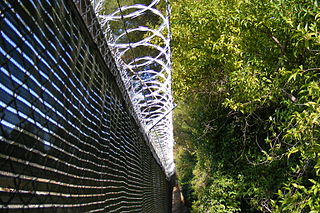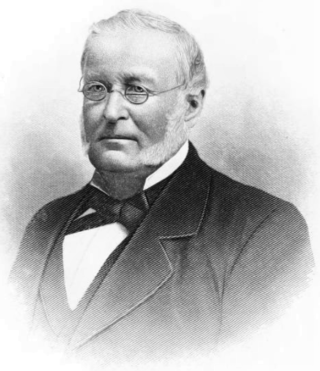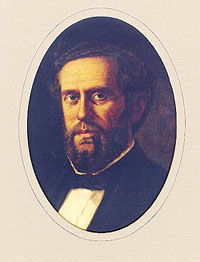
A fence is a structure that encloses an area, typically outdoors, and is usually constructed from posts that are connected by boards, wire, rails or netting. A fence differs from a wall in not having a solid foundation along its whole length.

Barbed wire, also known as barb wire, is a type of steel fencing wire constructed with sharp edges or points arranged at intervals along the strands. Its primary use is the construction of inexpensive fences, and it is also used as a security measure atop walls surrounding property. As a wire obstacle, it is a major feature of the fortifications in trench warfare.

Barbed tape or razor wire is a mesh of metal strips with sharp edges whose purpose is to prevent trespassing by humans. The term "razor wire", through long usage, has generally been used to describe barbed tape products. Razor wire is much sharper than the standard barbed wire; it is named after its appearance but is not razor sharp. The points are very sharp and made to rip and snag clothing and flesh.

DeKalb is a city in DeKalb County, Illinois, United States. The population was 40,290 at the 2020 census, down from 43,862 at the 2010 census. The city is named after decorated Franconian-French war hero Johann de Kalb, who died during the American Revolutionary War.

In agriculture, fences are used to keep animals in or out of an area. They can be made from a wide variety of materials, depending on terrain, location and animals to be confined. Most agricultural fencing averages about 4 feet (1.2 m) high, and in some places, the height and construction of fences designed to hold livestock is mandated by law.

Concertina wire or Dannert wire is a type of barbed wire or razor wire that is formed in large coils which can be expanded like a concertina. In conjunction with plain barbed wire and steel pickets, it is most often used to form military-style wire obstacles. It is also used in non-military settings, such as when used in prison barriers, detention camps, riot control, or at international borders. During World War I, soldiers manufactured concertina wire themselves, using ordinary barbed wire. Today, it is factory made.

In the military science of fortification, wire obstacles are defensive obstacles made from barbed wire, barbed tape or concertina wire. They are designed to disrupt, delay and generally slow down an attacking enemy. During the time that the attackers are slowed by the wire obstacle they are easy to target with machine gun and artillery fire. Depending on the requirements and available resources, wire obstacles may range from a simple barbed wire fence in front of a defensive position, to elaborate patterns of fences, concertinas, "dragon's teeth" and minefields hundreds of metres thick.

Joseph Farwell Glidden was an American businessman and farmer. He was the inventor of the modern barbed wire. In 1898, he donated land for the Northern Illinois State Normal School in DeKalb, Illinois, which was renamed as Northern Illinois University in 1957.
The punji stick or punji stake is a type of booby trapped stake. It is a simple spike, made out of wood or bamboo, which is sharpened, heated, and usually set in a hole. Punji sticks are usually deployed in substantial numbers. The Oxford English Dictionary lists less frequent, earlier spellings for "punji stake ": panja, panjee, panjie, panji, and punge.

John Ireland was the 18th Governor of Texas from 1883 to 1887. During Ireland's term, the University of Texas was established, and construction on the Texas State Capitol began. Ireland is credited with the selection of local pink granite as the construction material.

Hardcore wrestling is a form of professional wrestling where disqualifications, count-outs, and all other different rules do not apply. Taking place in usual or unusual environments, hardcore wrestling matches allow the use of numerous items, including ladders, tables, chairs, thumbtacks, barbed wire, light tubes, shovels, baseball bats and other improvised weapons used as foreign objects. Although hardcore wrestling is a staple of most wrestling promotions, where they are often used at the climaxes of feuds, some promotions specialize in hardcore wrestling, with many matches performed in this manner.

John Warne Gates, also known as "Bet-a-Million" Gates, was an American Gilded Age industrialist and gambler. He was a pioneer promoter of barbed wire. He was born and raised in what is now West Chicago, Illinois. He did not enjoy farm life and began offering neighbors various business propositions at an early age, including the sale of firewood to homes and to the local railroad. When he started a local grain brokerage that failed, Gates began spending time at the local railroad station and became reacquainted with the men he previously sold firewood to. He was invited to join their poker games and through this, Gates' aptitude for cards and other games of chance was developed.
Big Japan Pro Wrestling (BJW) is a Japanese professional wrestling promotion established in 1995. It is most famous for its deathmatch style contests.

Jacob Haish was one of the first inventors of barbed wire. His type of barbed wire was in direct competition with the other barbed wire manufacturers in DeKalb, Illinois. He was a known carpenter and architect in DeKalb County and designed several prominent DeKalb homes.

The Joseph F. Glidden House is located in the United States in the DeKalb County, Illinois city of DeKalb. It was the home to the famed inventor of barbed wire Joseph Glidden. The barn, still located on the property near several commercial buildings, is said to be where Glidden perfected his improved version of barbed wire which would eventually transform him into a successful entrepreneur. The Glidden House was added to the National Register of Historic Places in 1973. The home was designed by another barbed wire patent holder in DeKalb, Jacob Haish.
Morgan Park is a neighborhood in Duluth, Minnesota, United States.
A fence viewer is a town or city official who administers fence laws by inspecting new fences and settles disputes arising from trespass by livestock that had escaped enclosure.
Yasutaro (Keiho) Soga was a Hawaiian Issei journalist, poet and activist. He was a community leader among Hawaii's Japanese residents, serving as chief editor of the Nippu Jiji, then the largest Japanese-language newspaper in Hawaii and the mainland United States, and organizing efforts to foster positive Japan-U.S. relations and address discriminatory legislation, labor rights and other issues facing Japanese Americans. An accomplished news writer and tanka poet before the war, during his time in camp Soga authored one of the earliest memoirs of the wartime detention of Japanese Americans, Tessaku Seikatsu or Life Behind Barbed Wire.

In the Western United States and Canada, open range is rangeland where cattle roam freely regardless of land ownership. Where there are "open range" laws, those wanting to keep animals off their property must erect a fence to keep animals out; this applies to public roads as well. Land in open range that is designated as part of a "herd district" reverses liabilities, requiring an animal's owner to fence it in or otherwise keep it on the person's own property. Most eastern states and jurisdictions in Canada require owners to fence in or herd their livestock.
The Fence Cutting Wars occurred near the end of the 19th century in the American Old West, and were a series of disputes between farmers and cattlemen with larger land holdings. As newcomers came to the American West to farm, established cattlemen began to fence off their larger tracts of land with barbed wire in order to protect them from the farmers' claims. The settlers viewed this as a closing of the open range, and began to cut fences to attempt to reclaim lands in the public domain. The ensuing, widespread series of conflicts was known as the Fence Cutting Wars.














